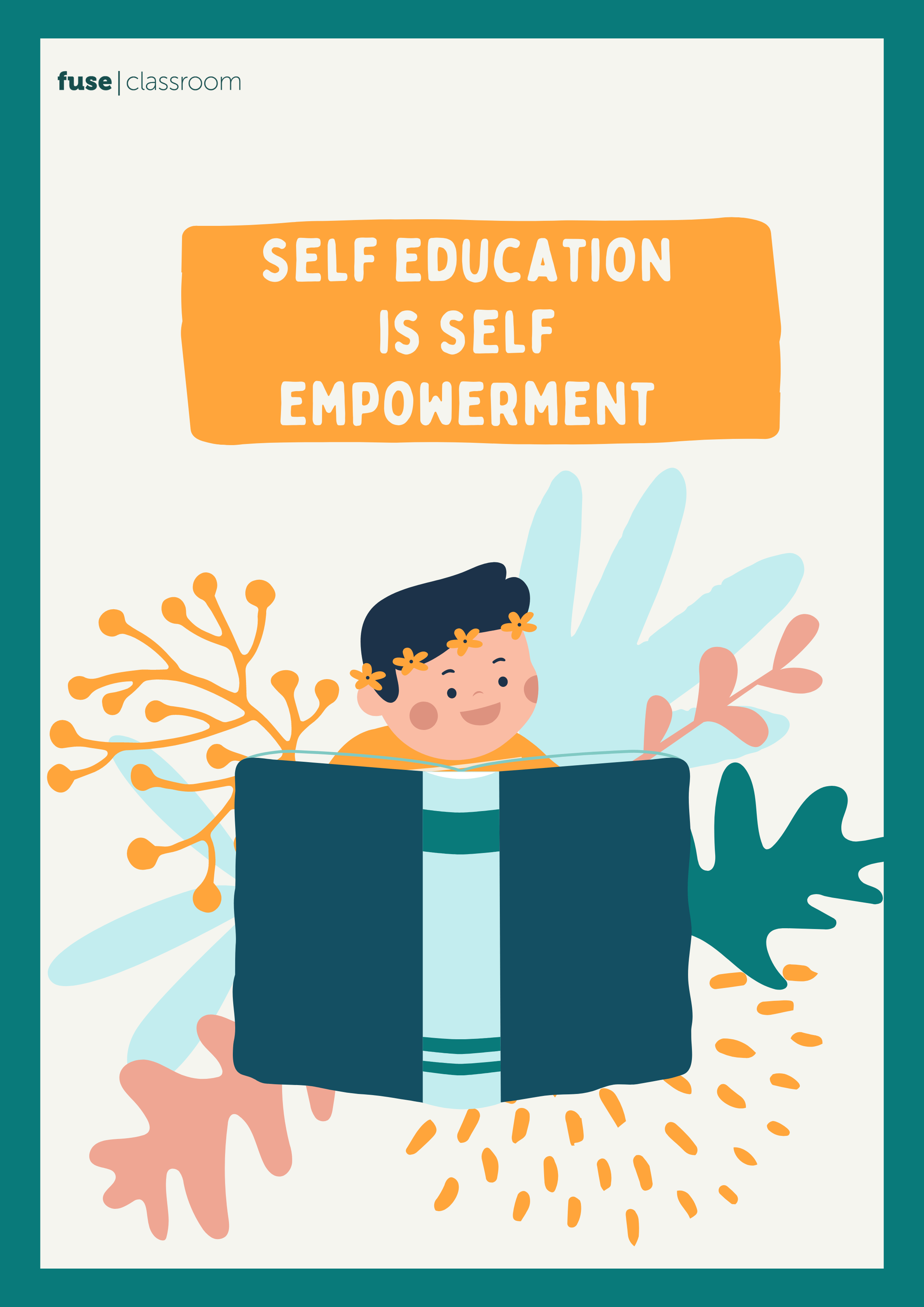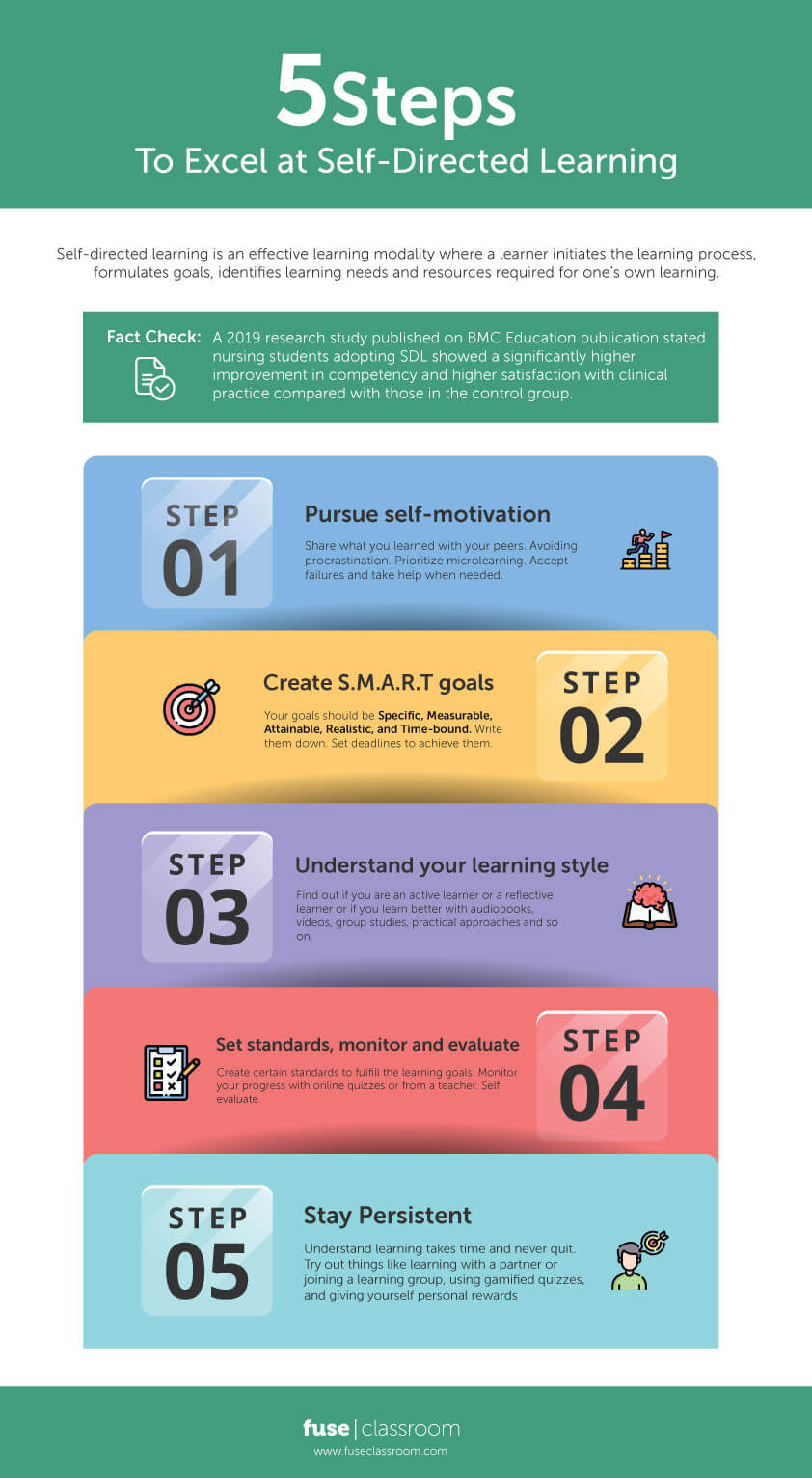We learn new things everyday, in and out of school. With information available at our fingertips, self-learning is more possible and powerful than ever. Students are given the ability to choose what and how to learn and practice self-directed learning. They don’t have to rely on teachers to learn something new. Instead, they can set their own pace, adopt different learning styles, and be accountable for the process and progress
What is self-directed learning?
Higher-education expert Malcolm Knowles defines self-directed learning as “a process by which individuals take the initiative, with or without the assistance of others, in diagnosing their learning needs, formulating learning goals, identifying human and material resources for learning, and evaluating learning outcomes.”
Why is self-directed learning important?
Self-directed learning allows students to become independent learners, helping them not just obtain skills but also practice of independent learning. Students have the freedom to create their own course plans and learning goals. They can identify needs, develop critical thinking and problem solving skills, creativity, accountability, perseverance, and diligence. A 2019 research study published on BMC Education publication stated nursing students adopting SDL showed a significantly higher improvement in competency and higher satisfaction with clinical practice compared with those in the control group.

Self-directed learning, particularly in a blended learning environment, encourages learners to pursue a wider range of interests. Learners can directly access any resource added by their instructors in an LMS or the open web source where students can learn at their own pace for the desired time period, instead of just attending physical classes.
Check out these 5 ways to become a self-directed learner.
1. Self-motivation
Some students struggle with self-directed learning because they lack intrinsic/self motivation. This is a must-have skill for students, and the good news is it can be learned! Start by sharing what you learned with your peers. Avoid procrastination by identifying habits and taking small steps to change them. Prioritize microlearning. Trying to learn a lot of things at once is often draining and unproductive. Avoid information overload and be prepared to not understand everything the first time you study it. A motivated learner enjoys the process of learning, accepts failures, and takes help when needed.
2. Create S.M.A.R.T goals
Every student has different learning goals and figuring out yours is the best way to start and stay organized. Your goals should be Specific, Measurable, Attainable, Realistic, and Time-bound. Write them down. It’s best to make a list of progressive goals that you’ll meet throughout the process while meeting the one main goal and arranging time and resources accordingly to achieve each one of them. Set deadlines to achieve those goals. Without strict deadlines, it’s harder to be consistent and students procrastinate. Download apps like ToDoist or Remember the Milk that sends weekly or daily reminders of upcoming deadlines.
3. Understand your learning style
It’s crucial to understand yourself as a learner. Try to find out if you’re an active learner (processes knowledge by applying it or telling it to others) or a reflective learner (process knowledge by thinking about the information and understanding things before applying). Other forms of learning styles include audio, visual, reading/writing and kinesthetic. Try using a combination of different learning styles and see which works best.
4. Set standards, monitor, and evaluate
Create standards for achieving your learning goals. For instance, set a goal of scoring at least 60 or above in an assessment. You feel more accountable and responsible when you set your own standards. Try to monitor your progress with the help of online tests/quizzes or with the help of a teacher. Evaluate and measure it against your own personal learning goals. Self-evaluation can help you improve and motivates you to do better in the future.
5. Practice persistence
A successful self-directed learner never quits. You should embrace the fact that learning takes perseverance and time. The more you build towards mastering something, the more gratifying it is. Try out new things such as learning with a partner or joining a learning group, using gamified quizzes, giving yourself personal rewards and so on.
As most students are dependent learners, adopting self-directed learning can seem difficult. But with the right guidance and tips, one can develop this ability and practice independent learning to reach their true learning potential. Students can take help from instructors to adopt learning strategies such as researching, planning, organizing so that they will slowly develop habits of self-studying and start their own learning journey!
Missed anything important? Here’s an infographic to help you quickly follow the 5 steps to excel at self-directed learning.


